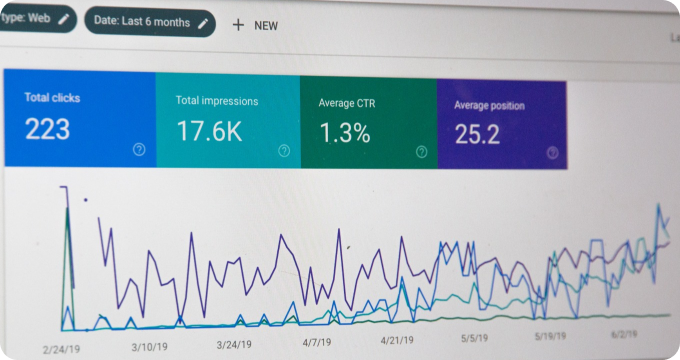The Future of LIMS Software: Predictions and Emerging Trends
- November 11, 2023
- 2 minutes
Laboratory Information Management Systems (LIMS) represent the crux of lab operations worldwide, offering integrated data management solutions that underpin scientific research, quality control, and regulatory compliance. In essence, these systems enable us to tackle the unending deluge of data that is intrinsic to the modus operandi of contemporary laboratories. As we stand on the precipice of the fourth industrial revolution, we can perceive the winds of change ushering in a new era of LIMS - one that is likely to be defined by advancements in artificial intelligence, cloud computing, and automation.
Firstly, let's delve into the rapidly evolving domain of artificial intelligence (AI) and its intersection with LIMS. AI algorithms, in all their guises - machine learning, deep learning, neural networks, etc. - are poised to dramatically transform how data is processed, interpreted, and utilized in laboratories. AI has the potential to automate routine data analysis tasks, thereby accelerating decision-making processes and reducing human error. Moreover, AI can facilitate predictive analysis, offering a proactive rather than reactive approach to data management. This paradigm shift will allow laboratories to anticipate and effectively respond to future challenges, thereby enhancing the robustness and reliability of their operations.
At the same time, we should be aware of the inherent tradeoffs associated with the incorporation of AI into LIMS. The efficacy of AI algorithms is contingent on the quality and quantity of data they are trained on. Hence, the implementation of AI may necessitate substantial upfront investment in data acquisition and preprocessing to ensure the derived insights are reliable. Moreover, AI operates as a black box, with its decision-making processes often shrouded in opaqueness, and this presents its own set of ethical and regulatory challenges.
Cloud computing is another significant trend disrupting the LIMS landscape. Cloud-based LIMS offers a cost-effective, scalable, and accessible solution to data management. Laboratories can leverage the high computational power of the cloud to process large volumes of data in real time and derive insights at an unprecedented speed. Furthermore, the cloud facilitates data sharing and collaboration across geographically dispersed teams, thereby fostering a culture of open science.
However, the adoption of cloud computing also engenders a new set of risks and challenges. As laboratories migrate their data to the cloud, they become increasingly susceptible to cyber threats. Hence, robust cybersecurity measures are imperative to safeguard sensitive data. Moreover, the reliance on internet connectivity may pose operational challenges in regions with unreliable network coverage.
Automation is yet another trend that is likely to shape the future of LIMS. Automated LIMS can streamline workflows, reduce manual errors, and enhance the accuracy and reproducibility of results. The integration of robotic process automation (RPA) with LIMS can further augment the efficiency of laboratories, enabling them to execute high-volume, repetitive tasks with precision and speed.
As with other technological advancements, automation is not without its downsides. The initial cost of setting up automated systems can be prohibitively high, making it a less viable option for small to medium-sized laboratories. Furthermore, automation may lead to job displacement, necessitating a reevaluation of workforce skills and roles.
The future of LIMS, thus, promises to be a dynamic interplay of these trends and more. In this age of rapid technological advancement, it is crucial for laboratories to stay attuned to these emerging trends and adapt their strategies accordingly. However, the successful implementation of these technologies is contingent on addressing the associated challenges and creating an ecosystem that nurtures innovation while ensuring data privacy and security. This delicate balancing act will be crucial in determining the trajectory of LIMS in the coming years.
Learn More
Unleash the power of efficiency and accuracy in your laboratory operations by diving deeper into our enlightening blog posts about LIMS software. For an unbiased, comprehensive view, they are encouraged to explore our meticulously compiled rankings of the Best LIMS Software.
Popular Posts
-
 6 Compelling Reasons Why Your Laboratory Needs LIMS Software
6 Compelling Reasons Why Your Laboratory Needs LIMS Software
-
 Debunking 10 Myths Surrounding LIMS Software in the Industry
Debunking 10 Myths Surrounding LIMS Software in the Industry
-
 Ask These Questions to a LIMS Software Provider to Choose the Right System for Your Lab
Ask These Questions to a LIMS Software Provider to Choose the Right System for Your Lab
-
 7 Essential Questions to Ask Before Investing in LIMS Software
7 Essential Questions to Ask Before Investing in LIMS Software
-
 5 Things I Wish I'd Known About LIMS Software Before Implementing It in My Lab
5 Things I Wish I'd Known About LIMS Software Before Implementing It in My Lab






